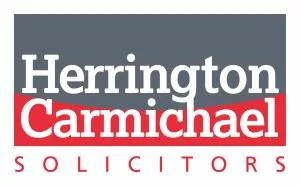- within Law Department Performance topic(s)
- with Inhouse Counsel
With the UK government having set a legislative target of a 78% reduction in greenhouse gases by 2034 and a target to achieve Net Zero by 2050, it is more important than ever for landlords and tenants to focus on the energy efficiency and sustainability of a building.
The Minimum Energy Efficiency Standards (MEES) prohibit lettings of a commercial premises if its EPC rating is below an E. The government has proposed that this will rise to an EPC rating of a C by 2027 and rise again to an EPC rating of a B by 2030.
Landlords are therefore coming under increasing pressure to improve and protect the energy efficiency of their commercial premises.
Landlords and tenants can work together to achieve better environmental outcomes by including lease provisions relating to sustainability that encourage cooperation throughout the lease term. Such provisions agreed between the landlord and tenant can implement practical ways of improving the environmental performance to ensure that the property is used as sustainably as possible. These are often called 'green clauses' in leases.
Examples of green clauses in leases
- Data sharing and metering: collecting energy data is important to improving the energy performance of a building and this data can be used to set targets, monitor the overall performance of the building and develop improvements;
- Energy efficiency: Measures to reduce energy consumption, such as the use of energy-efficient lighting and the use of energy-efficient appliances;
- Renewable energy: some green leases go a step further and encourage or oblige either the landlord or tenant to procure that energy used at a property is 100% renewable.
- Sustainability: this could include the requirement to use materials from sustainable sources and carry out repairs to a property in a sustainable manner;
- Water conservation: Installation of water-saving fixtures and systems, guidelines for responsible water usage and commitments to reduce overall water usage;
- Waste management: a central part of green leases involves implementing responsible waste management practices and can include strategies for waste reduction, recycling, and adopting sustainable waste disposal methods,
- Building management: Incorporating sustainable practices in building maintenance and operations
Benefits of green clauses
Along with benefits to the environment, there are a number of benefits to both the landlord and tenant in including green clauses within a lease, for example:
- the potential for tenants to reduce costs as a result of improved energy efficiency of the property and across building management, services and utilities
- there is an increased demand for sustainable buildings and therefore can widen the appeal of the property to sustainability focused lenders, investors and tenants.
- the futureproofing against commercial and physical risks caused by environmental factors.
- attract and retain both tenants and talent by demonstrating sustainable values and assist with compliance of environmental, social and governance (ESG) policies.
- Creating healthier spaces for tenants and promoting enhanced wellbeing for example by better ventilation and air quality.
As we get nearer to the energy efficiency target dates set by the government it is likely that these green clauses will become more market standard. Green lease provisions can be drafted and adapted to suit any property and the current and future needs and objectives of both the landlord and tenant.
The content of this article is intended to provide a general guide to the subject matter. Specialist advice should be sought about your specific circumstances.


